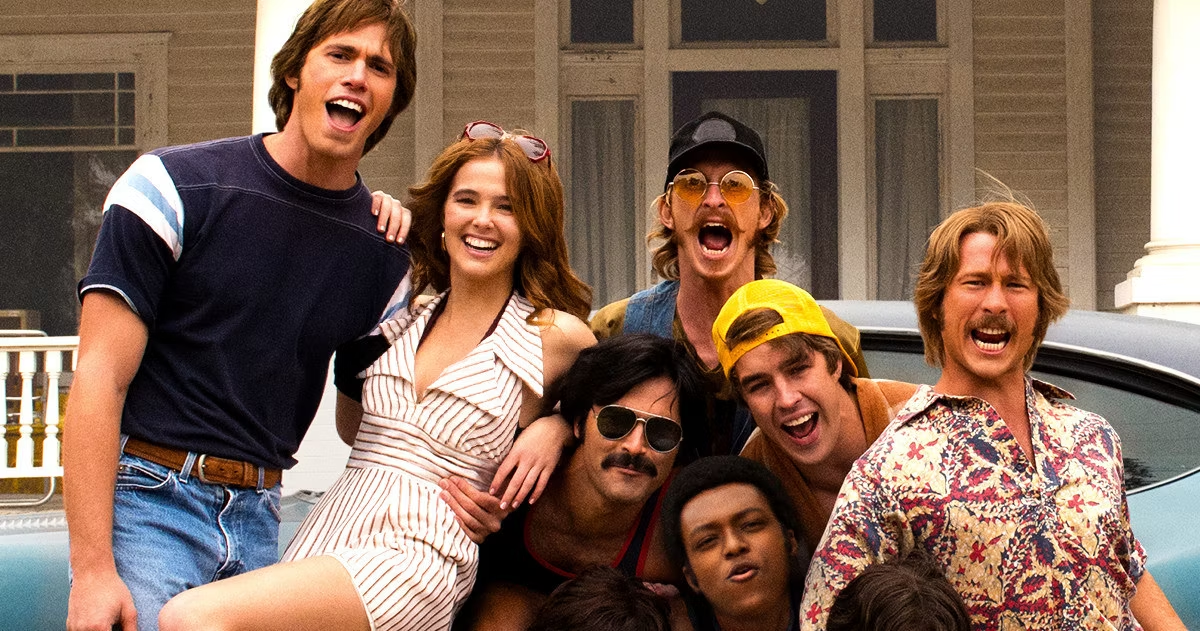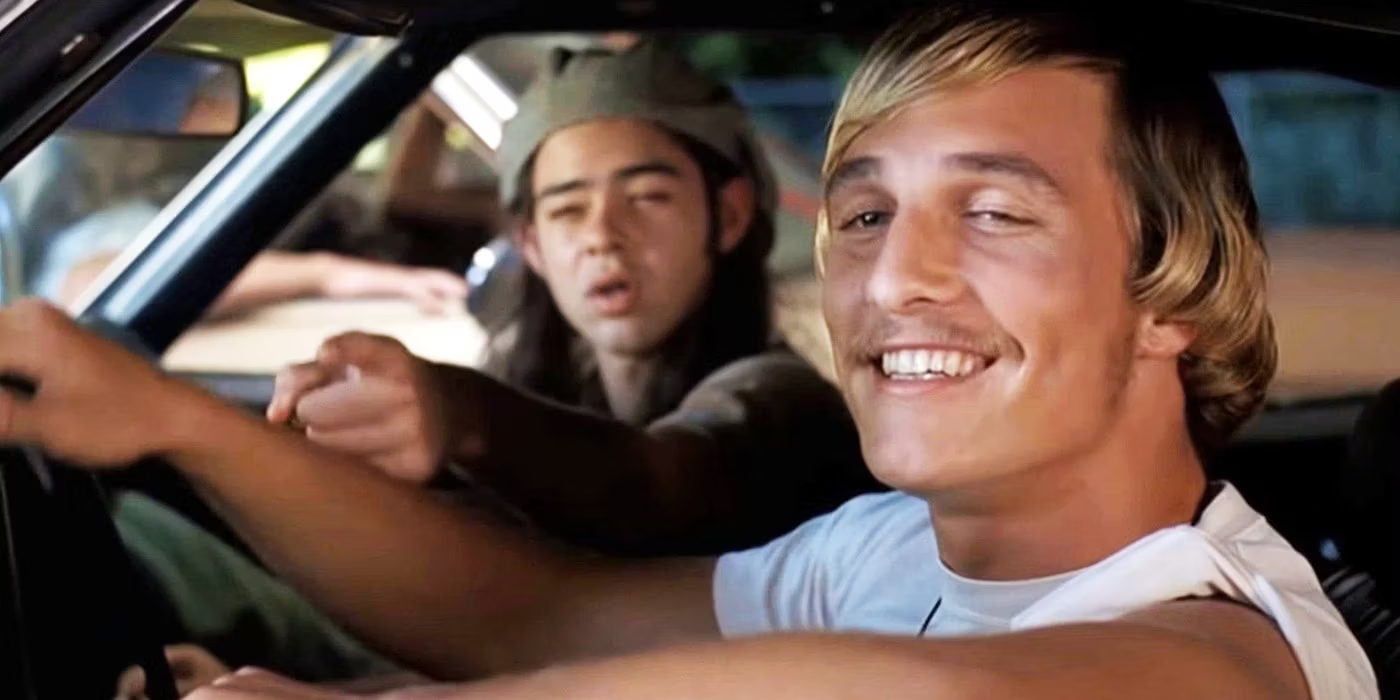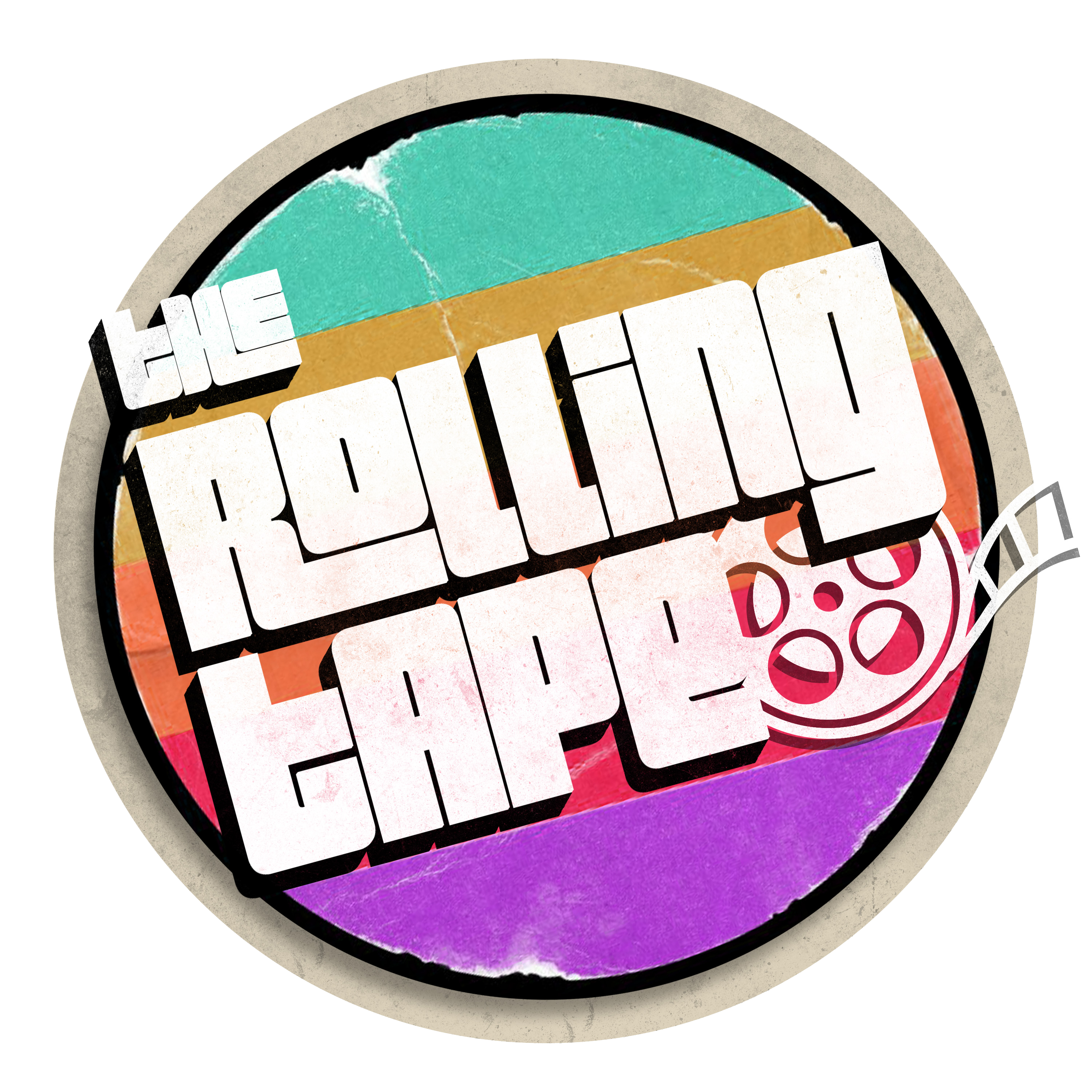Richard Linklater’s filmmaking career can be defined as a champion of the American independent cinema movement of the ’90s, a chameleon of the film industry navigating diverse genres and modes of filmmaking, and a unique self-taught storyteller born and bred in the south of Texas. He is a director with a plethora of trademarks and characteristics, but Linklater’s filmography is best studied through the passage of time. Often embedded with feelings of nostalgia and roots of his Texas childhood experiences, his films express distinct connections between time and the human condition. Within his directorial style, we are often greeted with narratives taking place over a single day that focus on human interactions and absurd philosophical conversations rather than traditional plot structures.
Linklater’s ability to translate the reality of the mundane through unconventional yet relatable filmmaking techniques has positioned him in a way that is both subversive to and in harmony with Hollywood. He is an observational storyteller able to navigate between commercial and experimental. The understanding that these descriptions can sometimes contradict one another is to understand who Richard Linklater is as a filmmaker. He is established as someone who breaks the rules in a way that makes sense and is different yet relatable. By exploring human existence through observation, Linklater defies many standard Hollywood portrayals of human interactions and has forged his own path subverting genre and plot structures. Each of his films can be studied in isolation, but the scope of his filmography as its own crafted story with larger arcs, timelines, and worlds of embedded nostalgia is where the genuine appreciation for his work begins.
Here are the top 12 films of Richard Linklater’s career, updated with his most recent film in 2024.
12. Me and Orson Welles (2009)
One of the most overlooked entries to Linklater’s catalog features a surprising turn from Zac Efron in his immediate post-High School Musical era. Hampered by poor marketing and one of history’s worst movie posters, the film was never seen by as many people as it should have been. Despite this, Efron and Christian McKay as the mercurial Orson Welles turn in significant performances as one of the few period pieces efforts within Linklater’s career.

11. A Scanner Darkly (2006)
A Scanner Darkly takes shape from Philip K. Dick’s novel of the same name. In Linklater’s second experiment with the rotoscoping animation technique, the art style blurs the lines between fantasy and reality. The visual technique induces a state of anxiety and paranoia further heightened by the unreliable narration and identities of its “scramble-suited” characters. Technically Linklater’s deepest dive into sci-fi, the story tackles notions of surveillance and reality in several unconventional methods. With Keanu Reeves at the helm, the film is certainly an underrated entry in his filmography.

10. Everybody Wants Some!! (2006)
Linklater is notable for putting his stamp on the “hang-out” film. Where this type of movie usually lacks in narrative plot, it often makes up for charismatic relationship dynamics and magnetic personalities. His most recent hang-out feature follows a college baseball team in the days leading up to the start of the new semester. With pseudo-narrative connections to another entrant on the list, the 2016 film Everybody Wants Some!! works in harmony with Dazed and Confused for its coming-of-age nature, this time a continuation of the high school format now moving into college. With the fluid, free-flowing quality of his narratives mastered at this point in his career, the film moves through time in a way that makes you immediately nostalgic for your college party days.

9. Hit Man (2024)
The newest addition to the Linklater oeuvre begs the question of what if a classic noir had cell phones and the leading man was insanely hot even in silly costumes. The answer? A wonderfully executed meta-script with humor, romance, and twists throughout. Linklater has seemingly subverted every genre and cinematic rule in the book throughout his career, but he does it again here wrapping a rom-com up in an action thriller bow. The genre diversion is executed in a way that is fresh but still maintains many of the trademarks we’ve grown to love throughout his filmography. Reteaming with Glen Powell proves once again that Linklater has the casting eye to bring full-blown Hollywood stars to light.

8. Slacker (1991)
No list of Linklater’s work is complete without mention of his second official feature film, 1991’s Slacker. The film is the epitome of the director’s style and explorations in the realm of the “walk-and-talk” by following a range of characters that span from conspiracy theorists to incompetent criminals to disillusioned philosophers. Nothing appears to connect these people outside of pure coincidence of physical adjacency, yet the disregard for traditional plot mechanisms allows the audience in on a pure human instinct to watch people even in the most mundane of circumstances. In a world saturated with thoughts and philosophy, Slacker gave us an early glimpse into what makes Richard Linklater tick.

7. School of Rock (2003)
At number 7 falls the commercial comedy, School of Rock. Part of what makes Linklater’s career so fascinating is his uncanny ability to shift from micro-budget indie favorites to mainstream commercial box office hits. School of Rock follows Dewey Finn (Jack Black) who finds himself teaching rock and roll to a group of private school elementary-age students. Irreverent and comedic in the best way possible, Jack Black is in his core element with a performance that strengthens a heart-warming story with his passion for music. The children back up our rockstar protagonist in a movie that is in equal part entertaining and inventive from Mike White’s extraordinary script.

6. Tape (2001)
Returning to the independent and experimental, Tape is perhaps the most unique entry to Linklater’s filmography. The film features nothing more than Ethan Hawke, Robert Sean Leonard, and Uma Thurman talking in a hotel room for 86 minutes. The passage of time is a recurring theme throughout Linklater’s work where time can seem to be squeezed or stretched. In this instance, the story operates at the extreme of real-time, forcing the audience into the story for the same 86 minutes as its characters. What the film lacks in excess it makes up for in exciting performances. Making the most of its finite resources, the three performers prove that a camera, an empty hotel room, and an anxiety-inducing script are all that is needed to give a viewer traumatizing claustrophobia.

5. Dazed and Confused (1993)
Alright, alright, alright. A classic staple of Richard Linklater’s filmography (and both the high school and stoner comedy genres) is the 1993 comedy, Dazed and Confused. Set in the 1970’s the story takes place on the last day of school following the stormy relationships between rising seniors and incoming freshmen. In a way that Everybody Wants Some!! doesn’t fully capture, the film oozes with the stench of nostalgia (and weed) and surpasses its peer “stoner comedies” by taking the audience on a single-day journey with the characters as they navigate a day in the life filled with drugs, initiation rites, and parties. The film is liberating in its ability to stray from conventional drama and plot in place of the endless search for “cool teen spirit.” As the film suggests, “just keep livin’, L-I-V-I-N” and that is exactly what the audience is invited to do.

4. Boyhood (2014)
Few films in the history of cinema explore the passage of time in quite the way the 2014 film Boyhood does. That’s because the film began filming in 2002, slowly recording the growth of its characters as the actors themselves changed and evolved over the years. Although this technique is certainly the film’s unique calling card, the honest substance of the script is what draws you into what is a career-defining monumental epic. Using the passage of time as the filmmaking technique itself personifies the coming-of-age experience brilliantly and engagingly while the characters learn about the world in real-time with their growth unfolding on-screen in front of you. Linklater’s most Academy-friendly movie, he was likely the number two for Best Picture and Best Director while Patricia Arquette won for Best Supporting Actress.

3. Before Sunset (2004)
Reaching the top 3, we are introduced to the second installment in Linklater’s Before Trilogy. The 2004 film captures the essence of its original counterpart by resuming the lives of Jesse and Celine (Ethan Hawke and Julie Delpy) nine years after they met on a train and spent a single night together. The fact that the films themselves were separated by the same time frame contributes to the ever-present chronicling of time that Linklater has employed throughout his career, and no exploration is more potent and seamless than the transition from Before Sunrise to Before Sunset. The characters interact in a way that recalls the spirit of their original encounter, but they have gained a sense of maturity in the last decade hardened by the experiences of life and missing a bit of romanticism from the past. Linklater conveys the toll that time has taken on his characters while still allowing their story to develop in a way that recalls the magic of Vienna.

2. Waking Life (2001)
The first rotoscoping adventure is 2001’s animated feature, Waking Life. The only film that interrupts the first two entries into the Before Trilogy is this psychedelic and philosophical thought experiment that moves through space and time in a parallel dream world asking questions it never fully attempts to answer. The film’s form and structure are shaped like a dream in a verbally and visually innovative cinematic art of the highest order. The film never quite reaches any conclusion about its meanderings, but that is exactly the point. The narrative defies logic, and the use of the film medium has never been more original to provide a hypnotic experience of grade-A mind-bending quality. Linklater consistently delves into mesmerizing dialogue in his scripts, but nothing quite touches Waking Life.

1. Before Sunrise (1995)
Although arguments can be made for the second and third installments, the original in Linklater’s famed romantic trilogy is the best and most important film of his career. The idealism and romanticism provide unparalleled moments of cinematic expression that culminate in everything Linklater has explored in his career: single-day narrative structures, human authenticity, and conversation-driven plots and relationships. Although the sequels provide quality storytelling in their unique ways, the original meeting of Jesse and Celine on the train holds up as one of the most critical moments in the romance genre of cinema. Allowing the audience to watch a pair of strangers fall in love in real-time is the greatest and most heartfelt achievement in the director’s career. The serendipity of the moment and the belief in fate have instilled romantic inspiration into our hearts and transported our hopes and dreams to the streets of Europe. Before Sunrise is the quietest magnum opus you will encounter, but it is the beating heart of a filmmaker’s illustrious career.

List Courtesy of Danny Jarabek
Feature Image Credit to Netflix via Deadline

Recent Comments